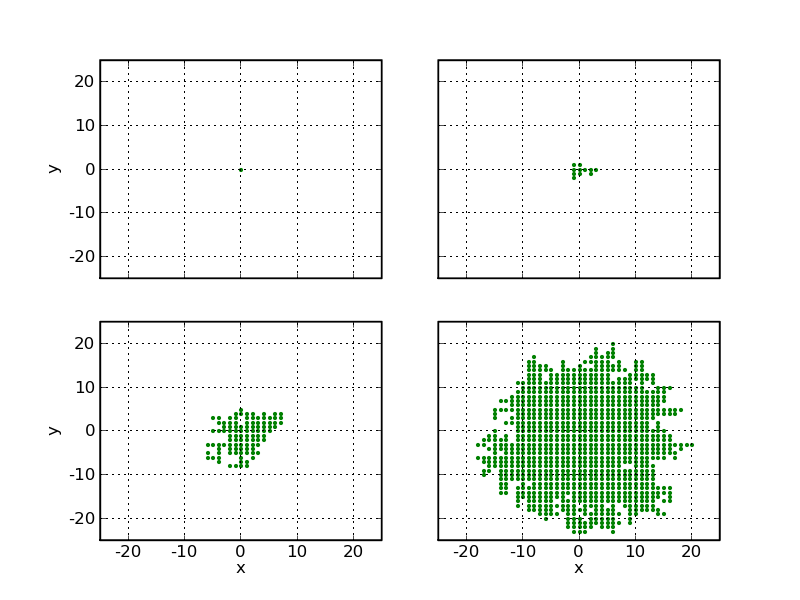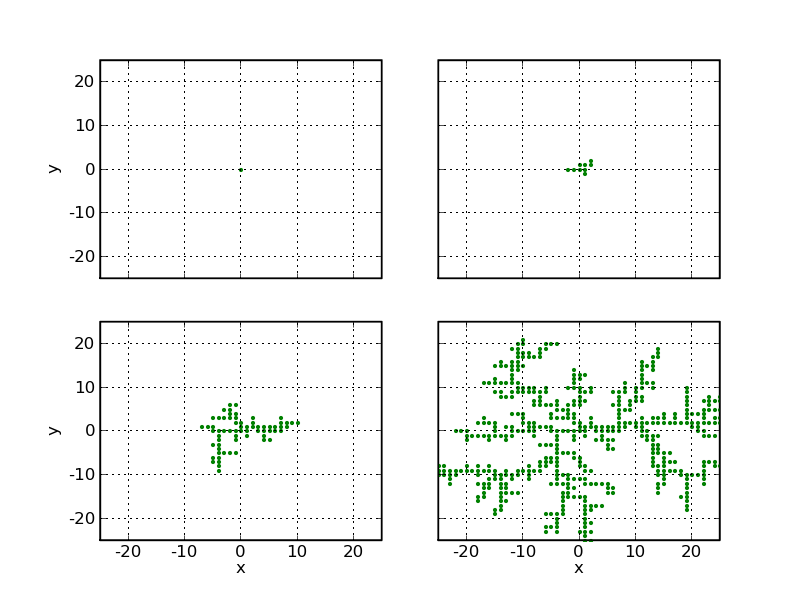The Eden model:
In this model, the next particle can be added to any nearest neighbour,
(±1,0) or (0,±1), but the exact location is
chosen at random. We will call such yet unoccupied sites that are nearest
neighbours to an occupied one the perimeter sites. This can obviously
also include sites that are completely surrounded by occupied ones. At each
step now, a perimeter site is chosen at random and a particle is added,
rendering it occupied, and, thus, a cluster site. The process of
turning perimeter to cluster sites is repeated and the cluster growth
continues until a cluster of the desired size has formed.
An example cluster with 1000 particles and its growth is shown below.

Clearly it grows a bit like a sphere, with a fuzzy edge and some holes in it. They eventually get closed, since such perimeter sites are not treated differently from the outer ones. This model is sometimes also referred to as the "cancer model", since cancer tumors typically grow like this.
Diffusion-limited aggregation (DLA):
However, not all clusters grow like in the Eden model - as an example take
snowflakes, where the cluster forms by particles adding to the cluster that
come in from the outside and at some point connect with the cluster. This
behaviour is captured by a model called diffusion limited aggregation,
or DLA. The rules for the growth of such a cluster are as follows: Particles
come in from the outside, from a place chosen at random, sufficiently far away
from the cluster. They perform a random walk, and when they hit a perimeter
site, they stick to the cluster. This is repeated with as many random walkers
as needed until a cluster of the desired size has grown.
An example cluster with 512 particles and its growth is shown below.

There's an apparent difference to the Eden-type cluster above - while the Eden cluster is more or less a solid disk, the DLA cluster is a much more fluffy object, with large holes in it and a very irregular shape.